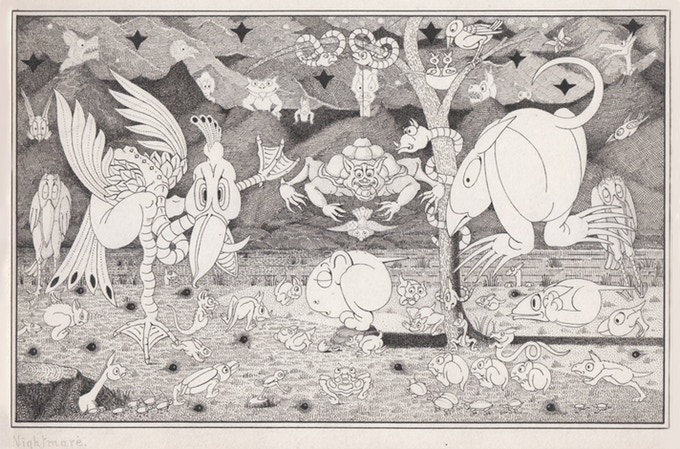Every cell is a world of its own. Within its boundaries, there are entities of all shapes and sizes each busy accomplishing specific activities - transcribing genes, synthesizing proteins, modifying proteins, ferrying molecules from one part of the cell to another, building molecular motorways, erecting scaffoldings, repairing scaffoldings, collecting waste, shifting waste, digesting waste... To keep this state of affairs going, there needs to be a continuous exchange between the cell and the outside world as various goods are shuttled across its membrane in both directions. There are checkpoints nevertheless, which is why cell membranes are riddled with canals or pumps that are more or less selective: not everything can come in or go out, while some things must come in and others are better out. It is a case of survival. Toxic compounds that find their way into microorganisms, for instance, are usually funnelled out by what are known as efflux pumps. These pumps pose one problem for humans however, and that is drug resistance. One such pump is the Trichophyton rubrum ABC multidrug transporter MDR3.
We have all heard of mycoses, and many of us have probably experienced one or two. Mycoses are fungal infections that are particularly contagious. Every year, hundreds of millions of humans suffer from various types, among which the very popular athlete's foot, a form of dermatophytosis caused by the fungus Trichophyton rubrum . Athlete's foot - or tinea pedis - was one of the most talked-about diseases in the UK and the USA in the 1930s when it spread almost uncontrolled. The epidemic was put down to modern lifestyles such as the emergence of public swimming pools for instance but also of modern materials and clothing items like socks and shoes which tend to keep feet moist and warm - an environment that Trichophyton rubrum loves. As a consequence and ironically perhaps, in those days fungal infections appeared within the more favoured strata of society, while they were also frequent in the working class populations in the UK where miners took communal showers.
Since the beginning of the 20th century, several antifungal drugs have been used to fight off dermatophytosis - namely allylamines and azoles, both of which target the fungal ergosterol biosynthetic pathway. This pathway is specific to fungi and essential for their survival since ergosterol is required for their plasma membrane, in the same way cholesterol is needed in animal cells. There is a flaw nonetheless: fungi are becoming more and more resistant to antifungal drugs. The question is why, or perhaps more importantly: how. As far as azoles are concerned, one answer is the overexpression of a certain kind of ATP Binding Cassette transporter, or ABC transporter, which acts as an efflux pump that flings the antifungal drugs back out of the cell. How can this occur?

Although ABC transporters were initially studied in bacteria, and believed to be of little importance outside this taxonomic domain, it gradually became obvious that not only were they numerous and diverse but they are actually found in all species. In fact, ABC transporters are necessary for a cell's physiology such as energy generation and cell signalling for instance, or for letting in essential nutrients while eliminating waste products. Efflux pumps are a certain kind of ABC transporter that rid cells of constituents that are toxic to them. These can be antibiotics, heavy metals, organic pollutants, quorum-sensing signals, plant products, neurotransmitters, bacterial metabolites... and antifungal drugs... Which brings us to azole resistance.
Certain strains of T.rubrum have found ways of becoming resistant to azole by way of an efflux pump named ABC multidrug transporter MDR3. MDR3 is overexpressed in these strains of T.rubrum , perhaps through the selection of a mutated upstream MDR3 transcription factor. As a consequence, the high presence of MDR3 in T.rubrum ends up selecting azoles and throwing them back out before they cause any harm. How has MDR3 become selective for azoles you may wonder? Well, efflux systems seem to be able to recognize a variety of compounds other than their natural substrates. This, biologists think, may well be due to the fact that recognition is based less on biological properties, such as ligands and their receptors, than physiochemical properties like hydrophobicity and aromaticity for example.
How do efflux pumps like MDR3 work? By which mechanism are they able to get hold of substrates in a cell's cytoplasm and redirect them into the extracellular space? In a nutshell, canonical ABC transporters have four core domains: two transmembrane domains (TMDs) and two cytoplasmic nucleotide binding domains (NBDs). The TMDs form a canal to which substrates bind, through which they move and from which they are finally released. When a ligand binds to an ABC transporter, it probably increases the NBD's affinity for ATP. Consecutive ATP-binding and -hydrolysis produces the power necessary for a conformational change of both TMDs. It is this change that pushes the ligand through to the other side of the membrane where it is released. Once released, the ABC transporter can relax and is ready to bind another ligand.
Here is yet another case of how Nature, with the old trick of natural selection, has found a way of circumventing human action - albeit therapeutic in this case - to its own advantage. Drug resistance is a real problem for human health. In countries like India, there is an ever-increasing resistance of pathogenic fungi to antifungal drugs because of the high concentration of azoles and allylamines now present in the soil and water. Alarmingly, human efflux pumps are also involved in drug resistance to cancers. Studying the ABC transporters of pathogens more closely will help to find ways of developing novel therapeutic drugs which could inhibit the transporters themselves for instance, or even upstream transcription factors. Things are not so simple, however, because humans share the same ABC transporters - which implies they would be targeted too.

